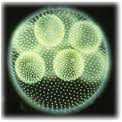The following hyperlinks show the metadata that was created to correspond with four excel data files corresponding to air quality and human health parameters in the San Francisco Bay area counties.
Metadata for asthma hospitalization ratesMetadata for demographics in the San Francisco Bay AreaMetadata for ozone concentrationsMetadata for particulate matter concentrationsThe two excel spreadsheets listed below correspond to the merging of: 1) asthma hospitalization data and demographics and, 2) atmospheric ozone and particulate matter concentrations.
Merged data files for asthma hospitalization and raceMerged data files for ozone and particulate matterProcess Summary for
Prepare I: Air Pollution, Asthma, and Race in the San Francisco Bay AreaBrian E. Rood
September 7, 2010
Objective:To gather data from typical public-access sites that will be incorporated into a comprehensive GIS that will elucidate the relationship between air quality, human health, and race in the San Francisco Bay Area counties.
Data Gathering:Demographic data was parsed out from the US Census 2000 website,(http://factfinder.census.gov/servlet/datasetmainpageservlet) to identify the racial composition of the San Francisco Bay Area counties.
Asthma hospitalization rates (sorted by race) were manually transcribed from the California County Asthma Hopitalization Chart Book (Data from 1998-2000), California Department of Health Services. 9/03.
Air quality data (ozone and particulate matter) were both downloaded from the Bay Area Air Quality Management District (BAAQMD)(http://www.baaqmd.gov)
Data Handling:The downloaded data were copied into separate MS Excel spreadsheets.
The resulting spreadsheets were modified to a format that would be
suitable to merge into the attribute table of existing shapefiles provided
by Ms. Trisha Holtzclaw. FID numbers were incorporated into the
spreadsheets that would be matched with the pre-existing FID values in
the shapefiles.
Documentation:The metadata for the spreadsheets were updates in ArcCatalog using the
metadata file editor function. In the meantime, I realized that it would be
most appropriate to first merge the demographic and asthma
hospitalization rate files because these data would ultimately be merged
with the county shapefile (polygons), and the ozone and particulate
should be merged because they would be joined with the air monitoring
stations layer (point shapefile). Once these spreadsheets were
appropriately merged, then the metadata files could be updated.
Future Expectation:The collected and modified data will be examined and incorporated into
a comprehensive GIS that will help us better understand patterns and
correlations of air quality, race, and human health in the San Francisco
Bay Area counties.







































 Bad Map: Of the poorly designed maps that I have discovered, this is the one that I want to present. Sadly, this is a map on a Georgia tourism site. I find the proportions to be odd (i.e. the highway symbols are odd-looking and the color contrast hurts my eyes). I do not care for the thin yellow border for the state and the numerical markers are completely meaningless without a connected legend (i.e. it is important for the legend to be more prominently links to the image map).
Bad Map: Of the poorly designed maps that I have discovered, this is the one that I want to present. Sadly, this is a map on a Georgia tourism site. I find the proportions to be odd (i.e. the highway symbols are odd-looking and the color contrast hurts my eyes). I do not care for the thin yellow border for the state and the numerical markers are completely meaningless without a connected legend (i.e. it is important for the legend to be more prominently links to the image map).